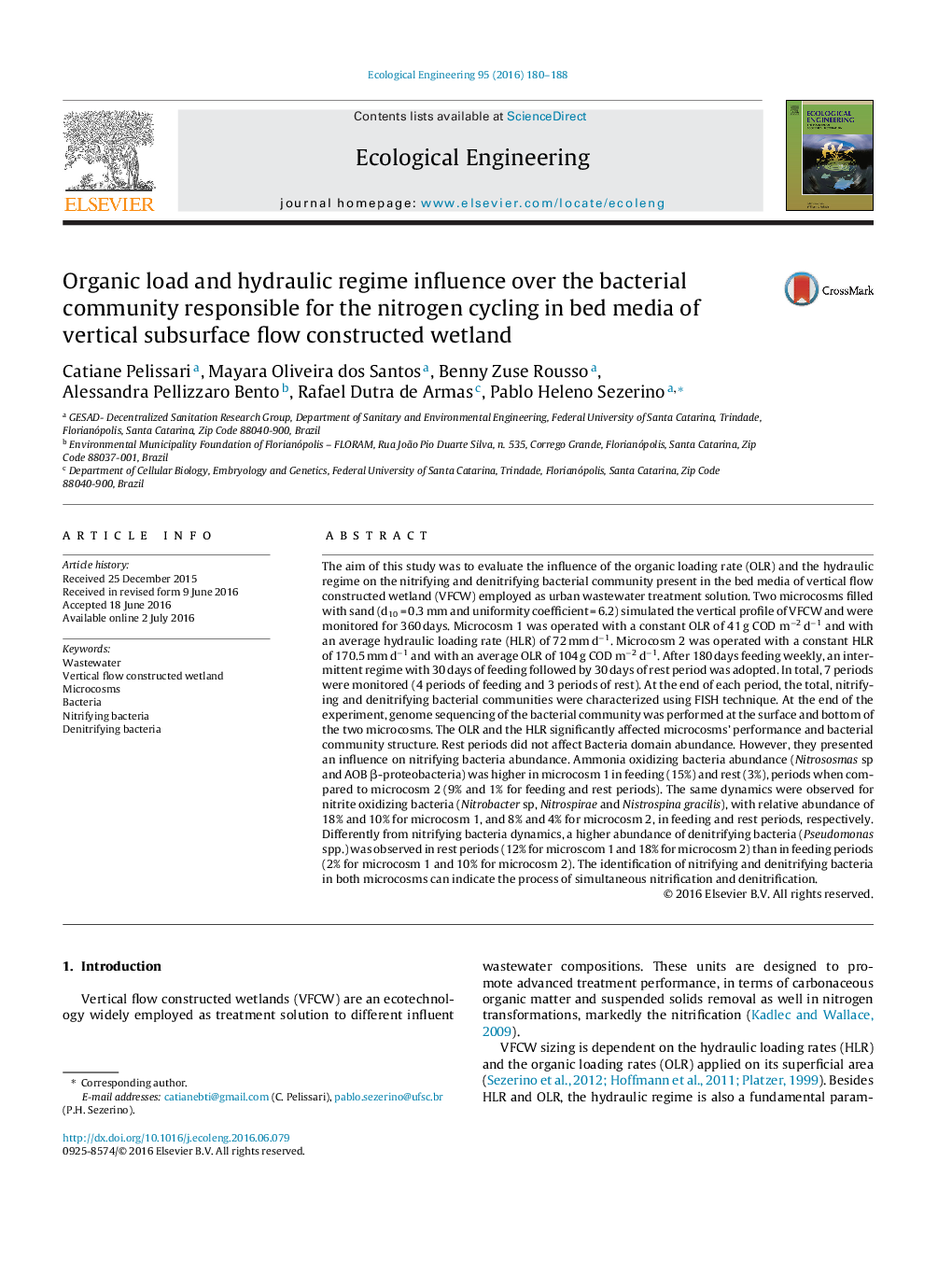| کد مقاله | کد نشریه | سال انتشار | مقاله انگلیسی | نسخه تمام متن |
|---|---|---|---|---|
| 4388442 | 1618004 | 2016 | 9 صفحه PDF | دانلود رایگان |
The aim of this study was to evaluate the influence of the organic loading rate (OLR) and the hydraulic regime on the nitrifying and denitrifying bacterial community present in the bed media of vertical flow constructed wetland (VFCW) employed as urban wastewater treatment solution. Two microcosms filled with sand (d10 = 0.3 mm and uniformity coefficient = 6.2) simulated the vertical profile of VFCW and were monitored for 360 days. Microcosm 1 was operated with a constant OLR of 41 g COD m−2 d−1 and with an average hydraulic loading rate (HLR) of 72 mm d−1. Microcosm 2 was operated with a constant HLR of 170.5 mm d−1 and with an average OLR of 104 g COD m−2 d−1. After 180 days feeding weekly, an intermittent regime with 30 days of feeding followed by 30 days of rest period was adopted. In total, 7 periods were monitored (4 periods of feeding and 3 periods of rest). At the end of each period, the total, nitrifying and denitrifying bacterial communities were characterized using FISH technique. At the end of the experiment, genome sequencing of the bacterial community was performed at the surface and bottom of the two microcosms. The OLR and the HLR significantly affected microcosms’ performance and bacterial community structure. Rest periods did not affect Bacteria domain abundance. However, they presented an influence on nitrifying bacteria abundance. Ammonia oxidizing bacteria abundance (Nitrososmas sp and AOB β-proteobacteria) was higher in microcosm 1 in feeding (15%) and rest (3%), periods when compared to microcosm 2 (9% and 1% for feeding and rest periods). The same dynamics were observed for nitrite oxidizing bacteria (Nitrobacter sp, Nitrospirae and Nistrospina gracilis), with relative abundance of 18% and 10% for microcosm 1, and 8% and 4% for microcosm 2, in feeding and rest periods, respectively. Differently from nitrifying bacteria dynamics, a higher abundance of denitrifying bacteria (Pseudomonas spp.) was observed in rest periods (12% for microscom 1 and 18% for microcosm 2) than in feeding periods (2% for microcosm 1 and 10% for microcosm 2). The identification of nitrifying and denitrifying bacteria in both microcosms can indicate the process of simultaneous nitrification and denitrification.
Journal: Ecological Engineering - Volume 95, October 2016, Pages 180–188
